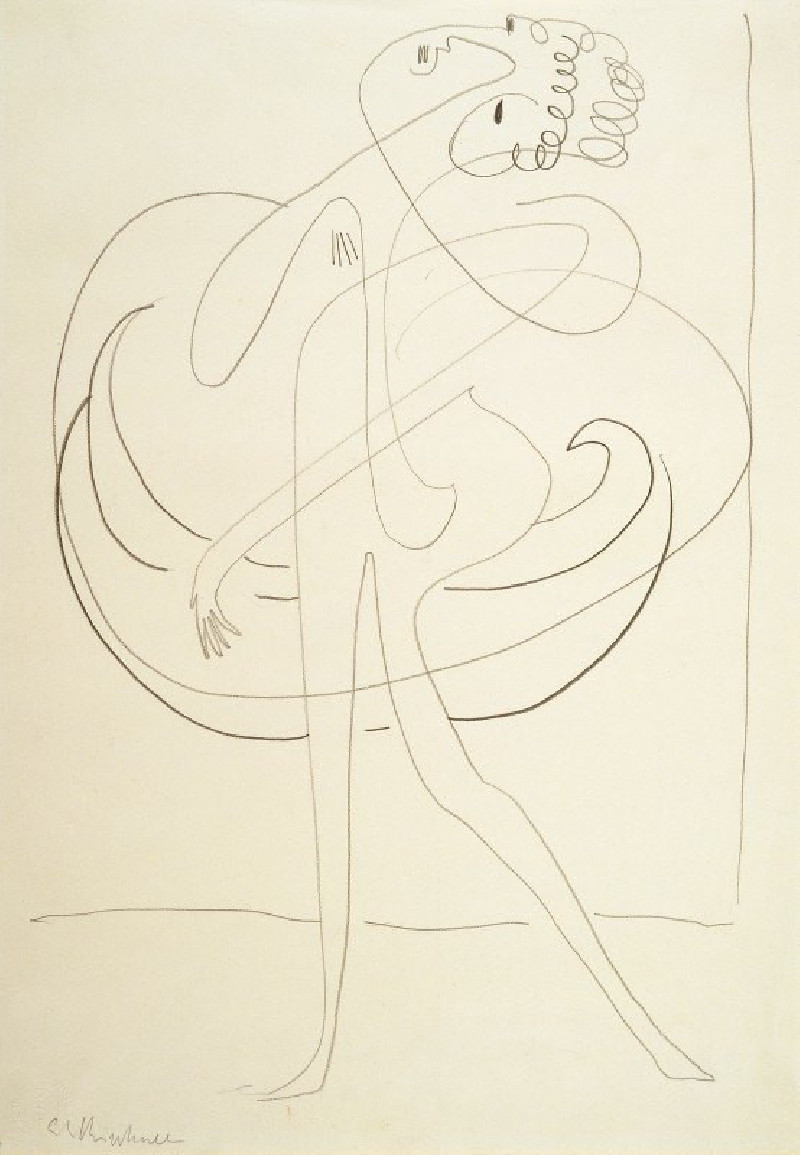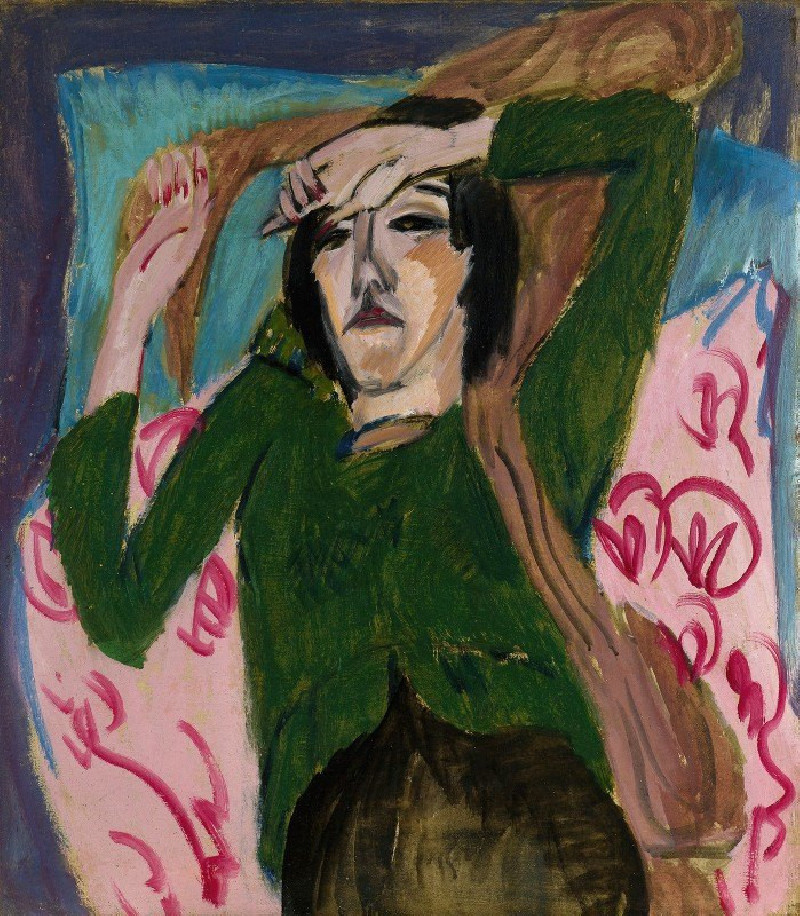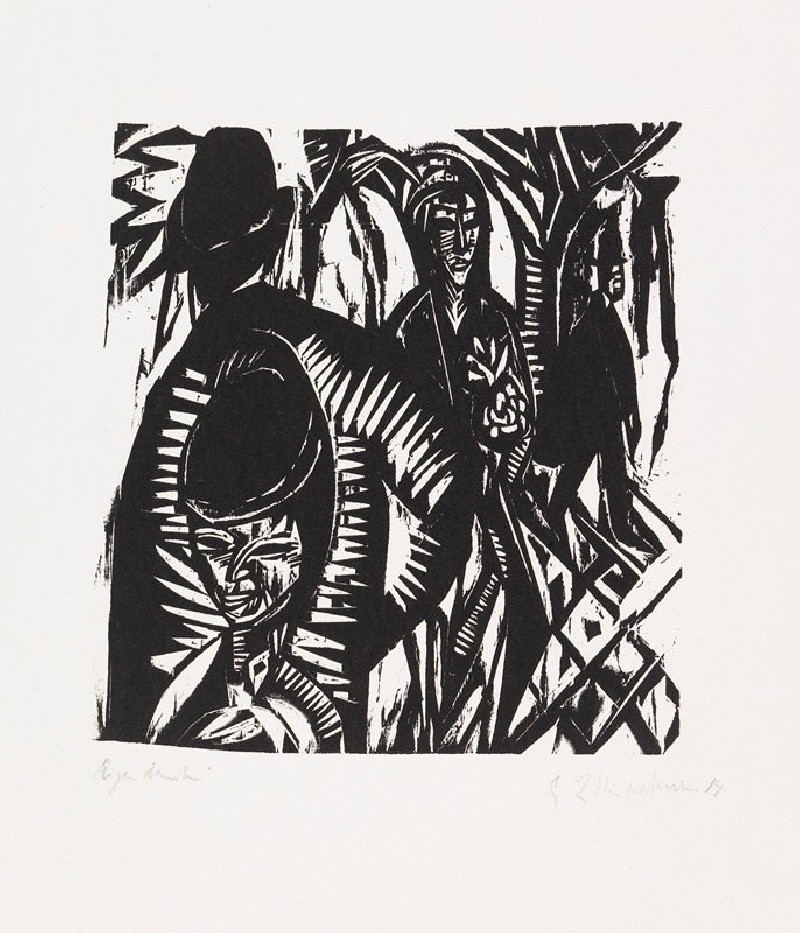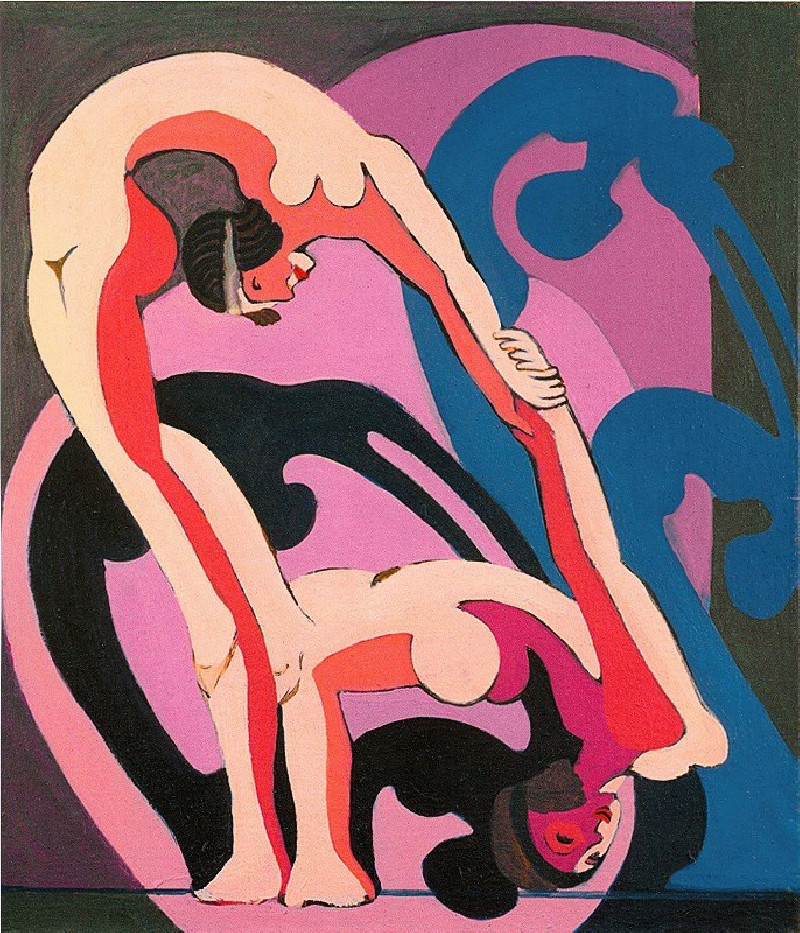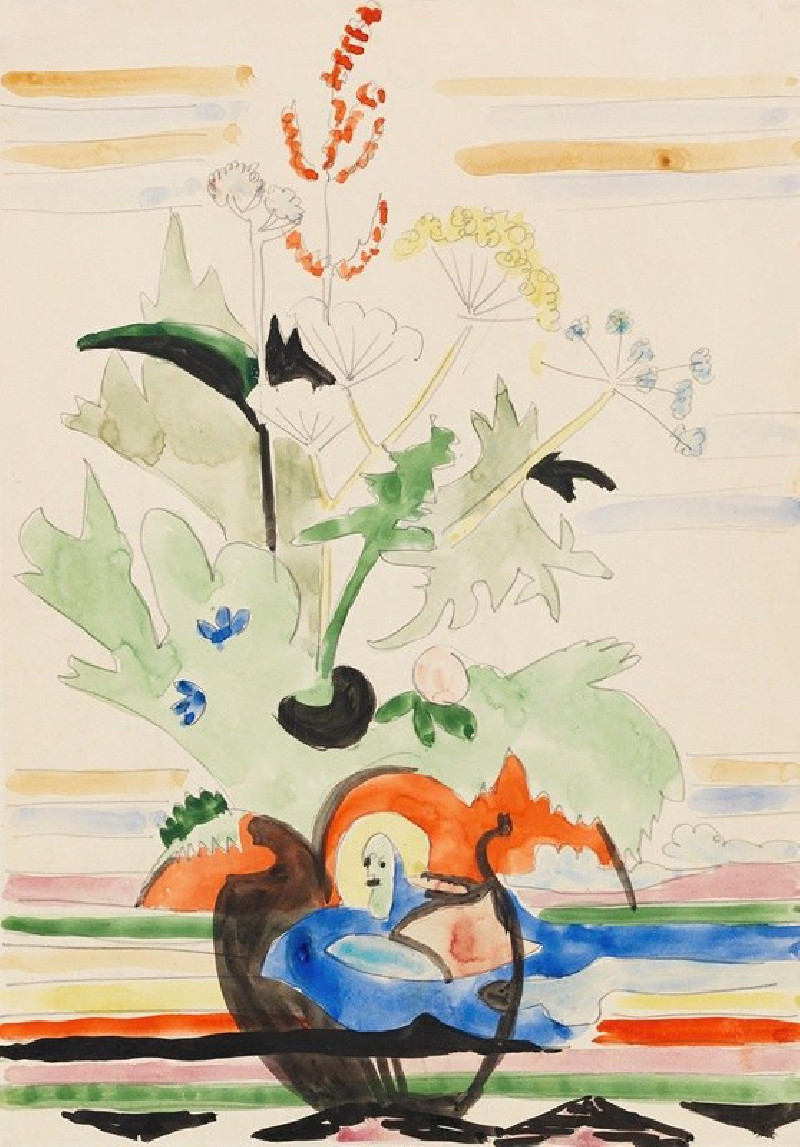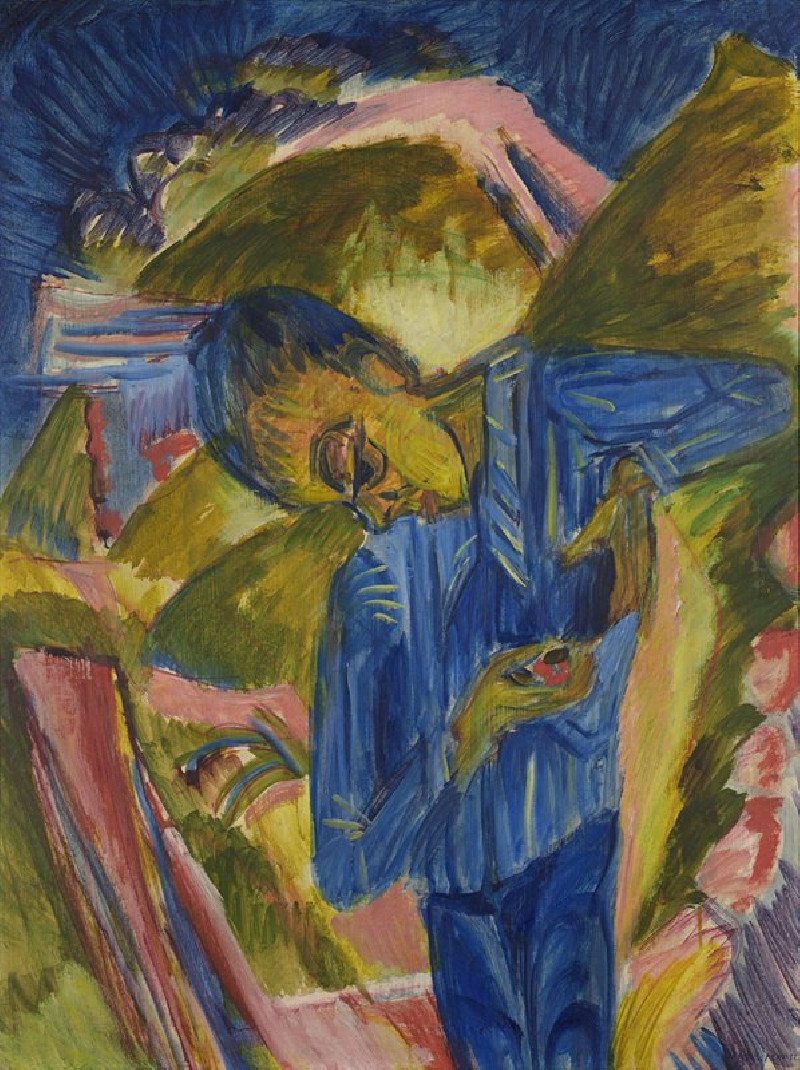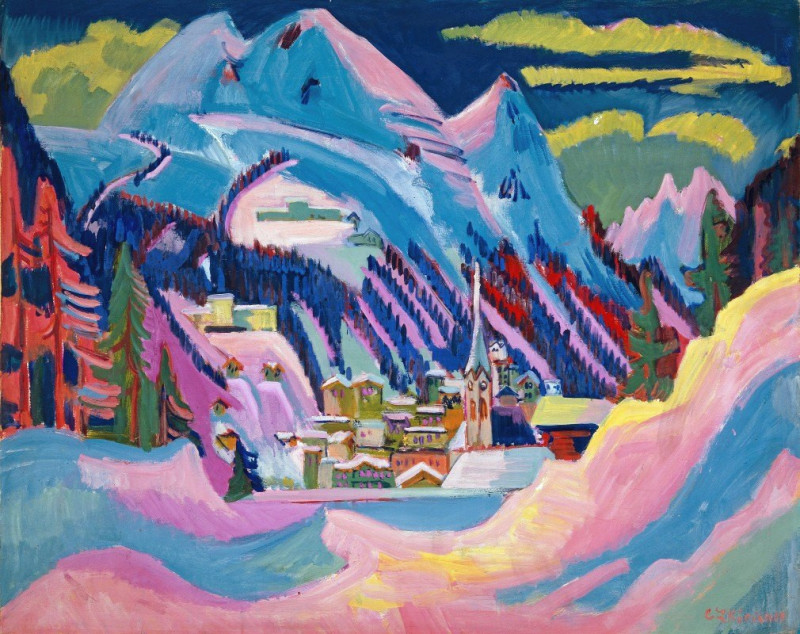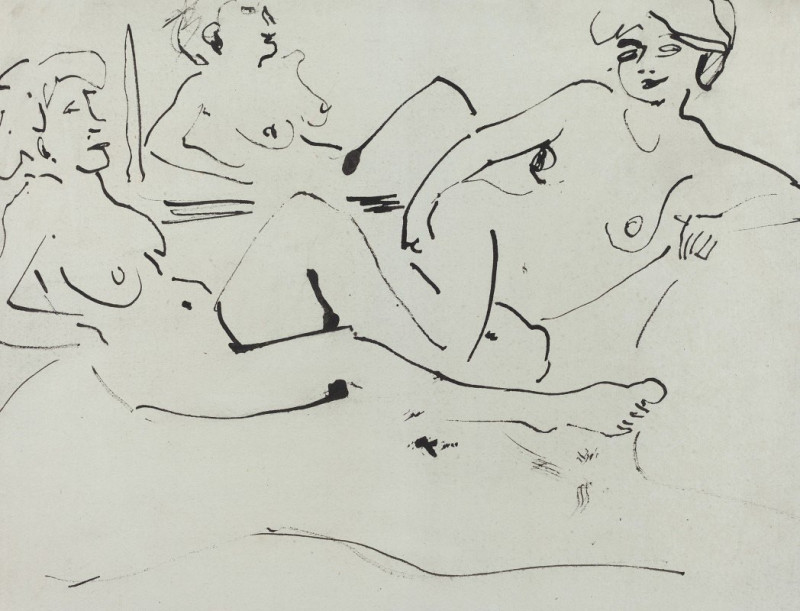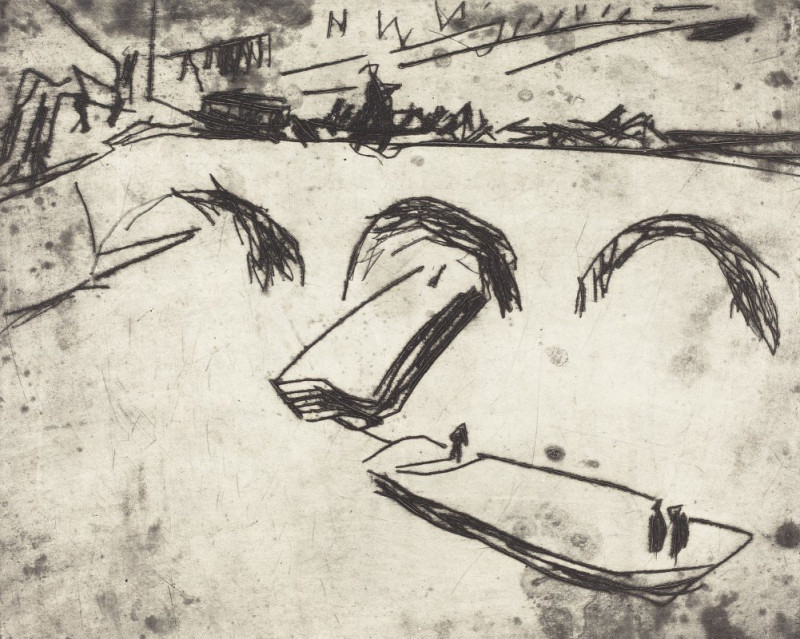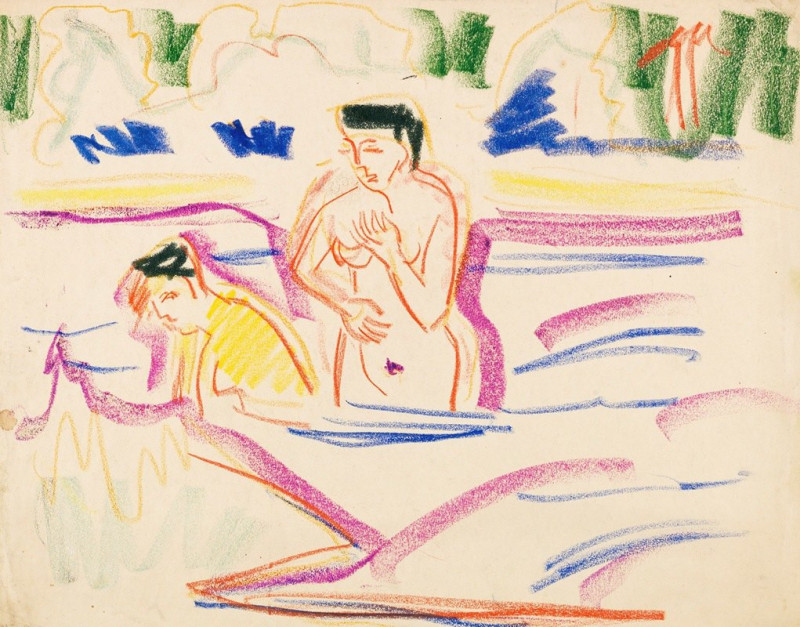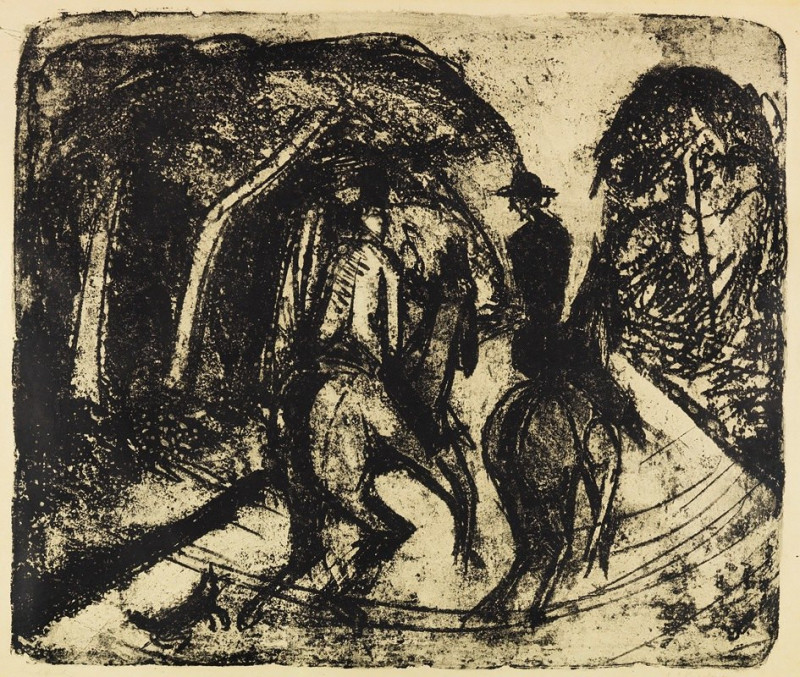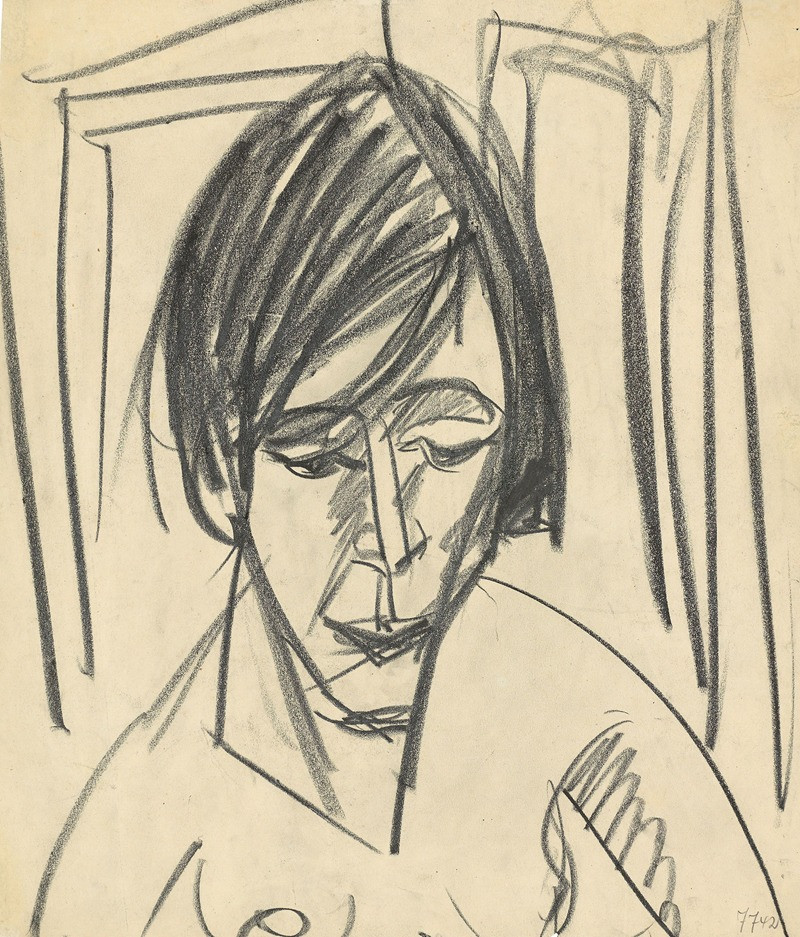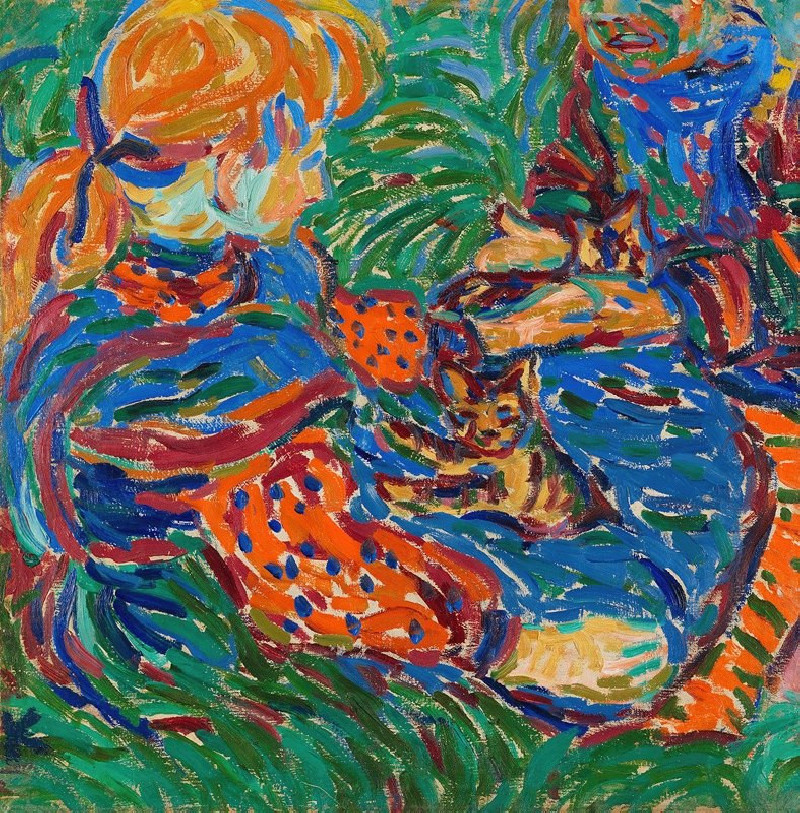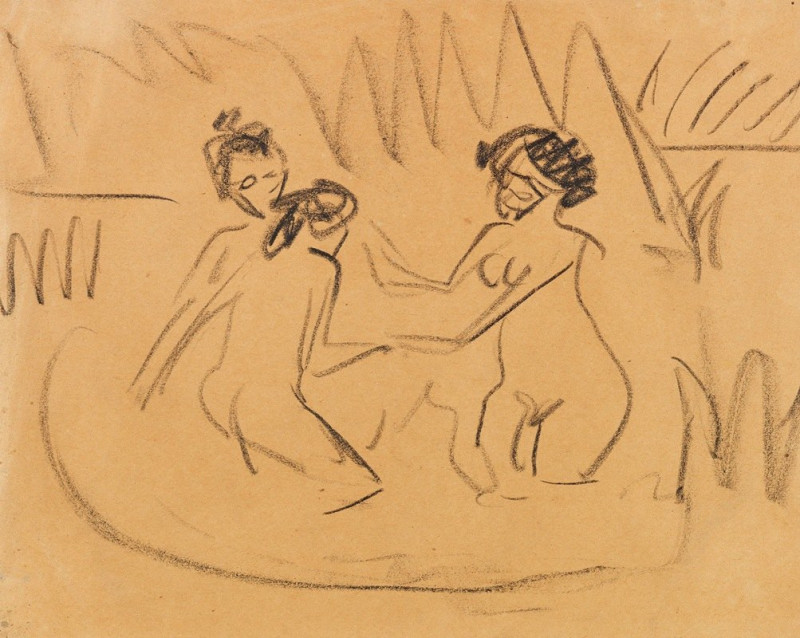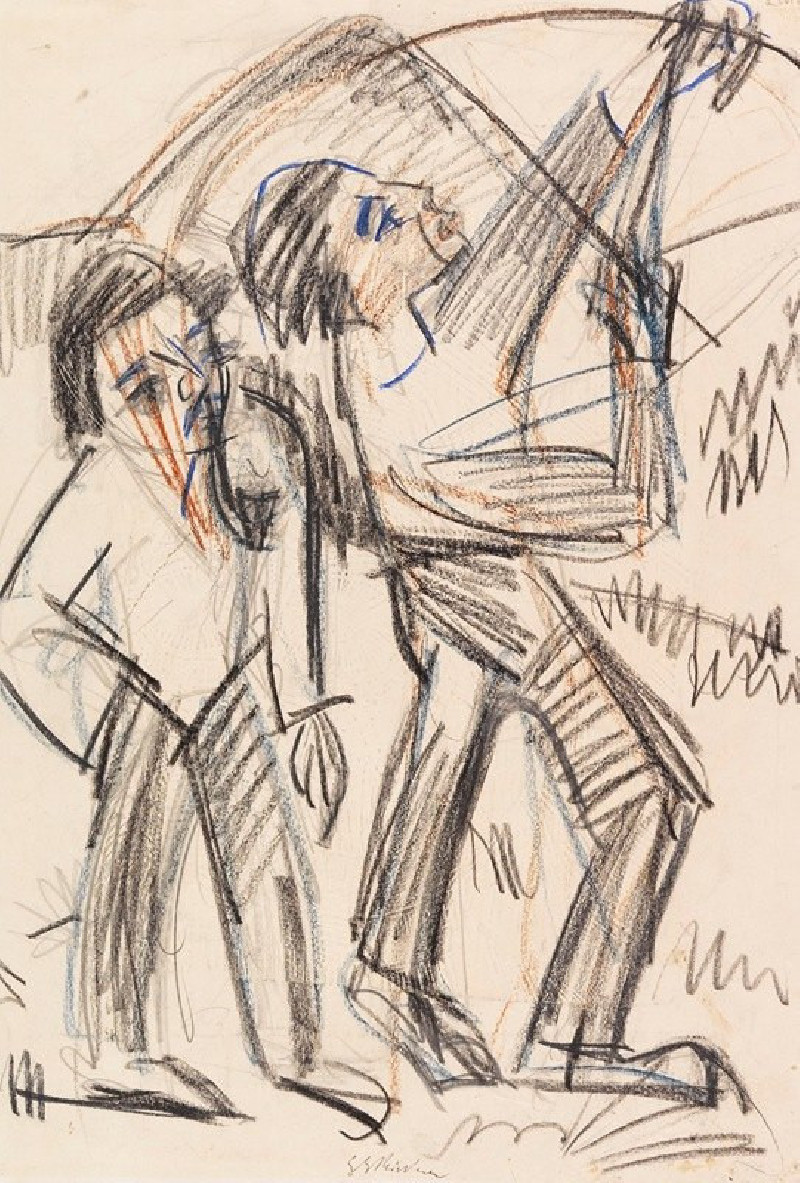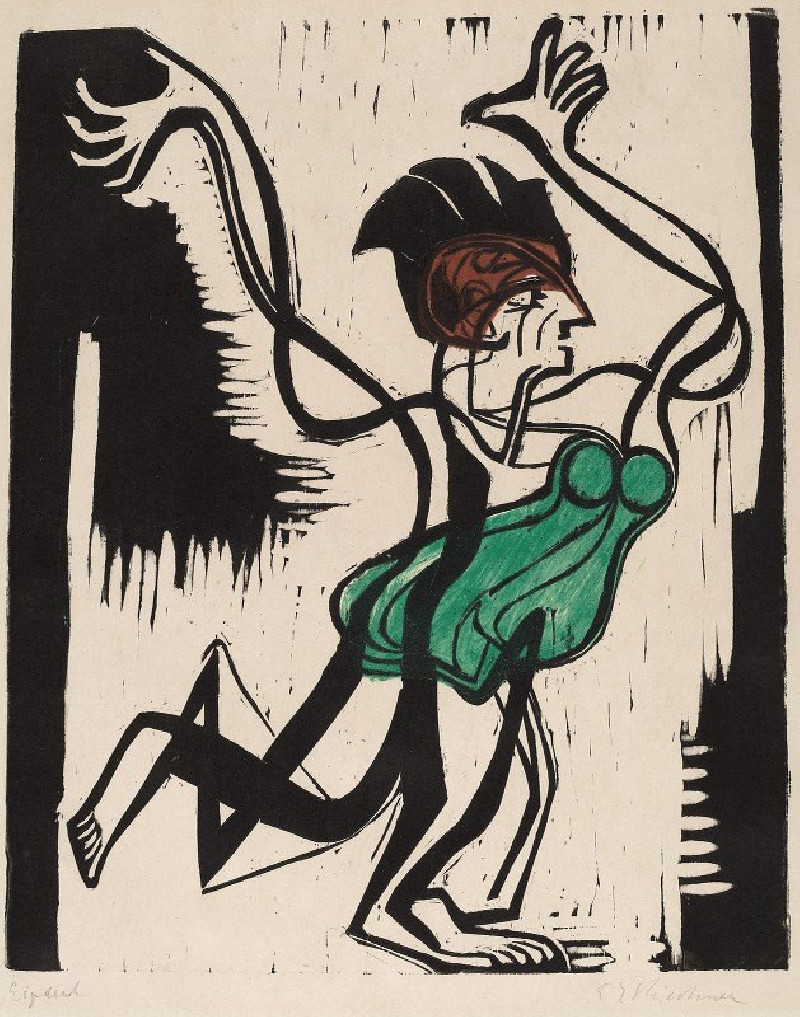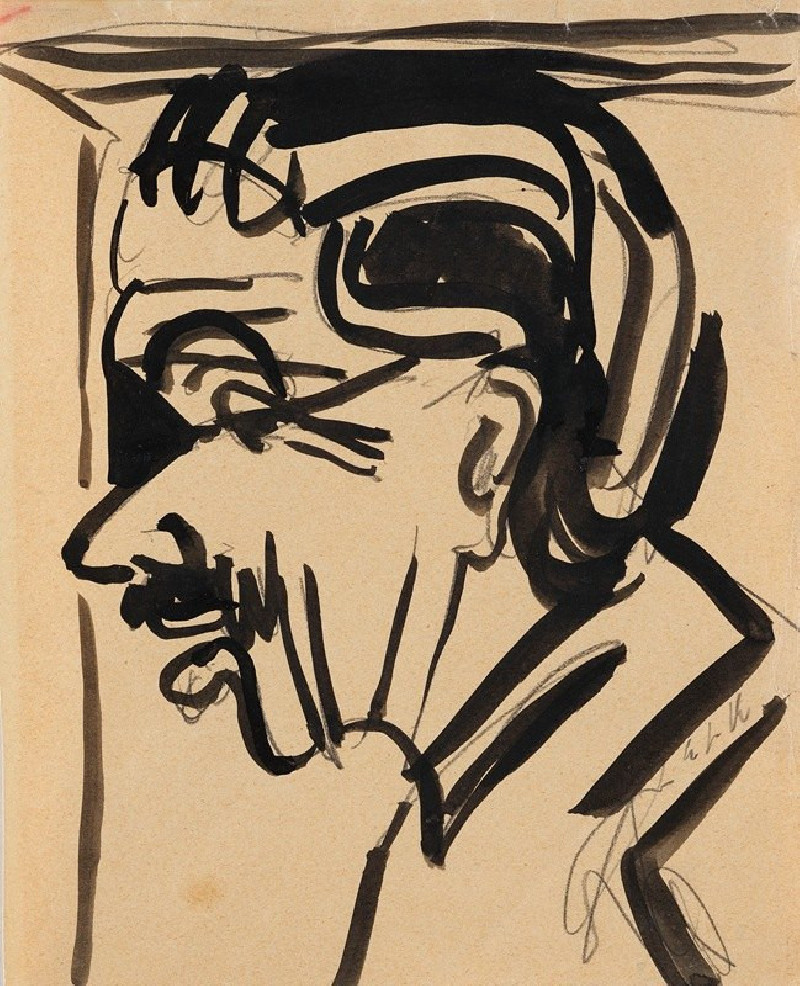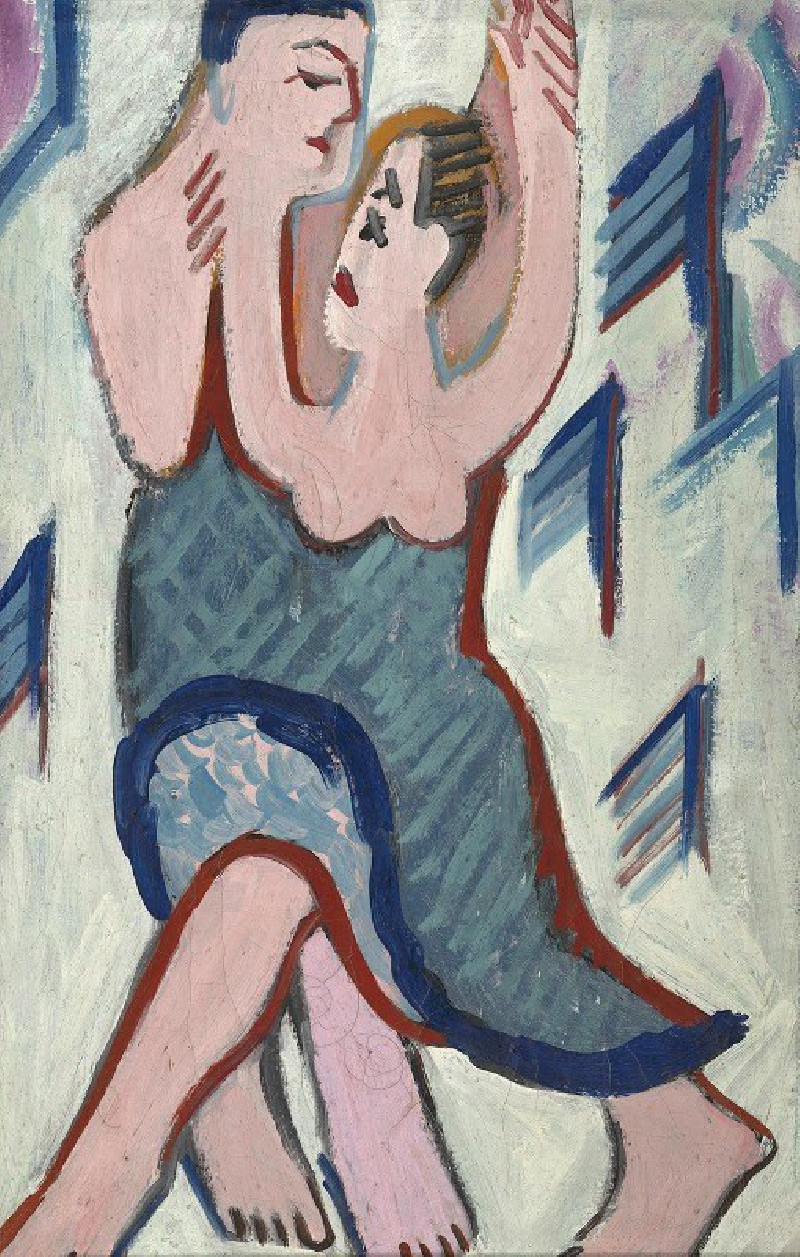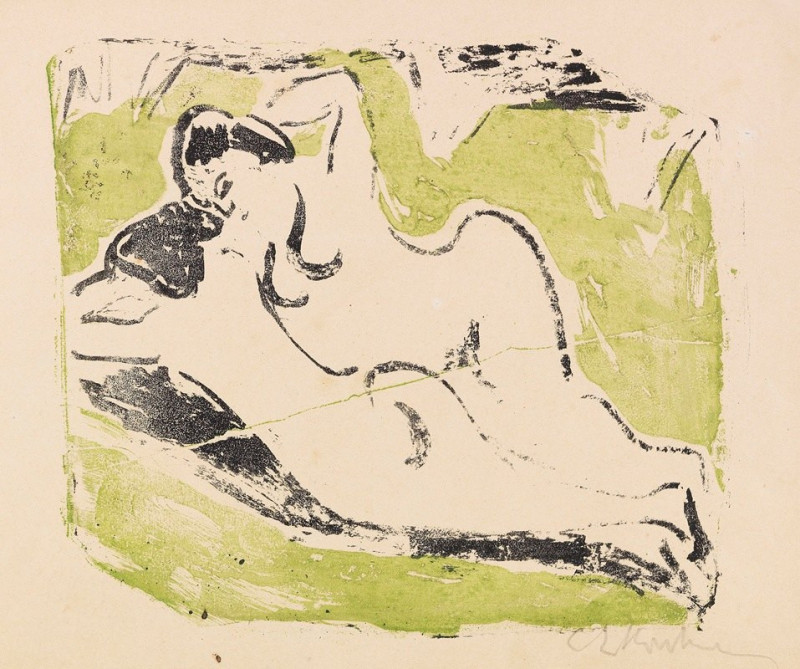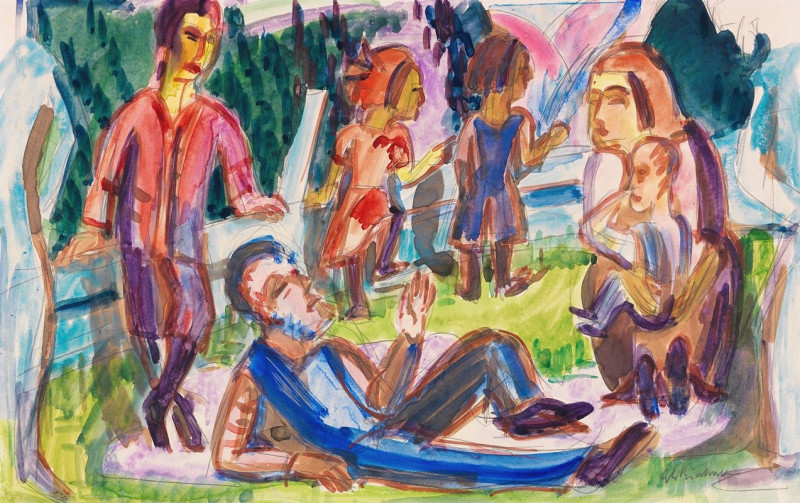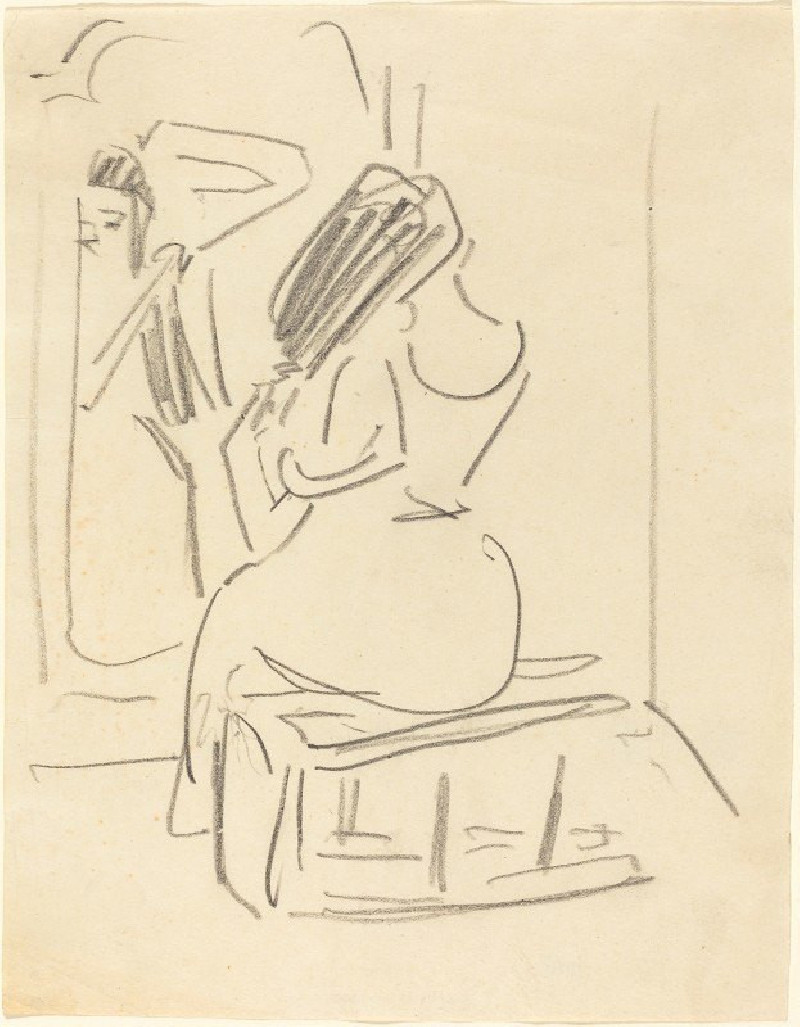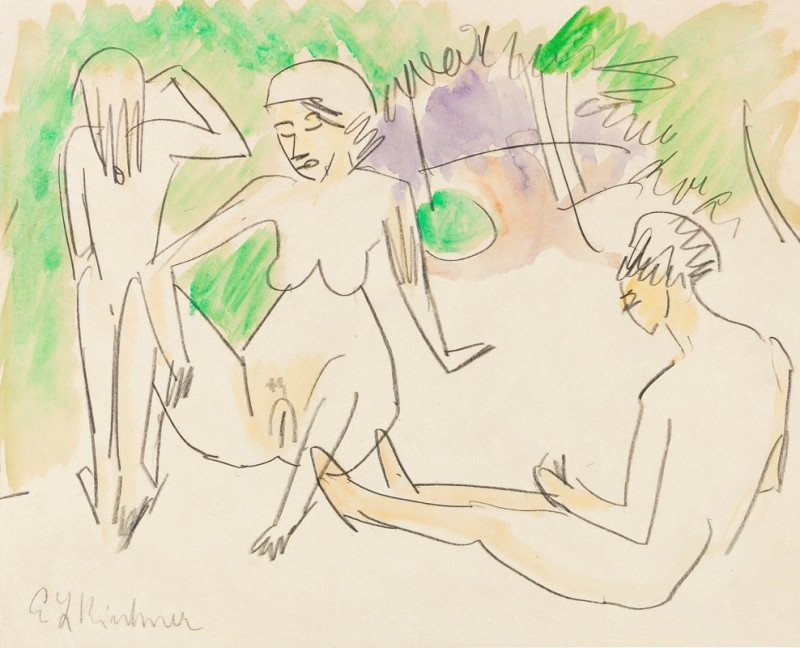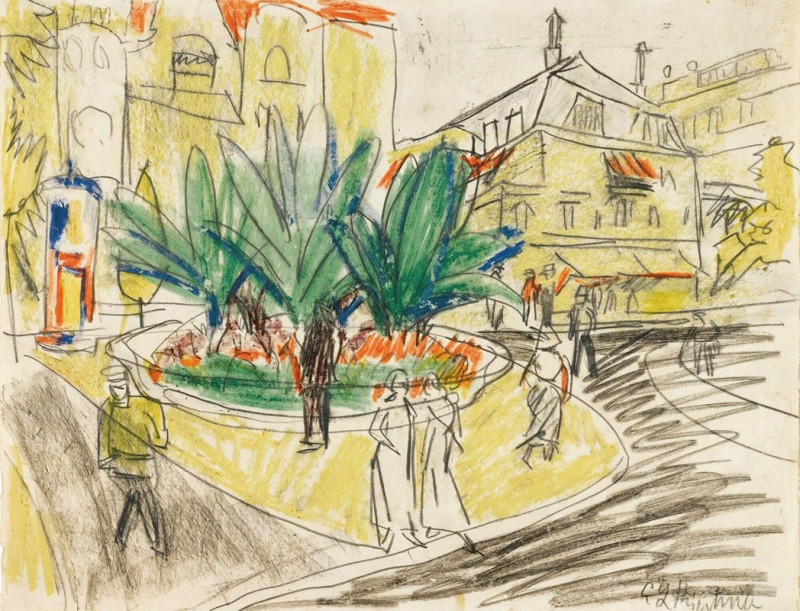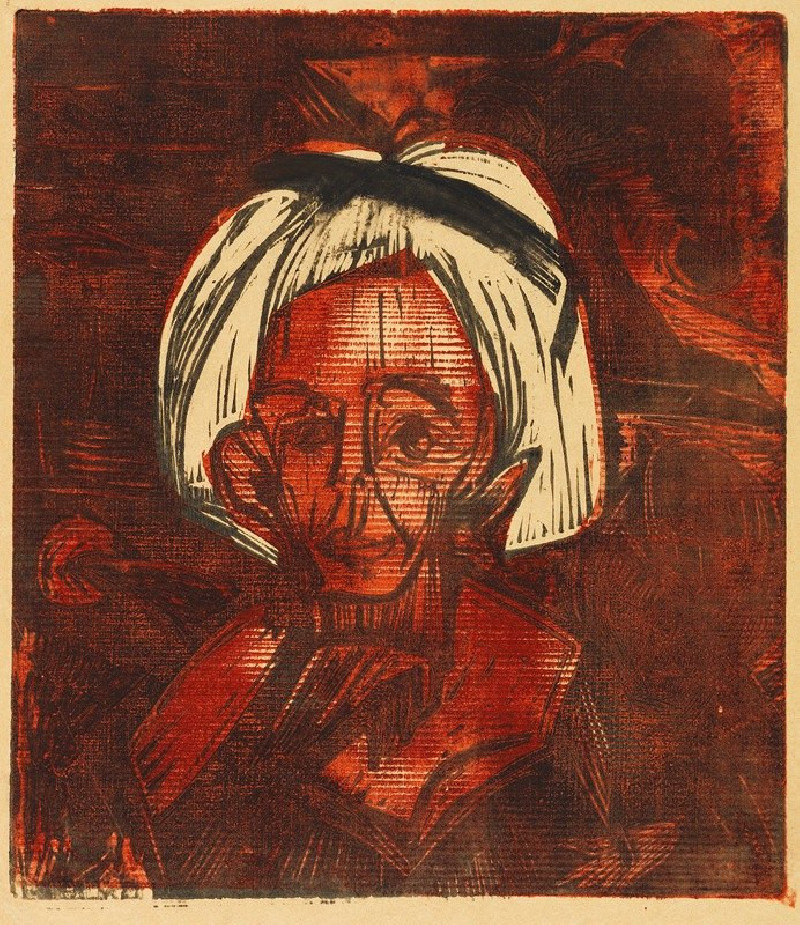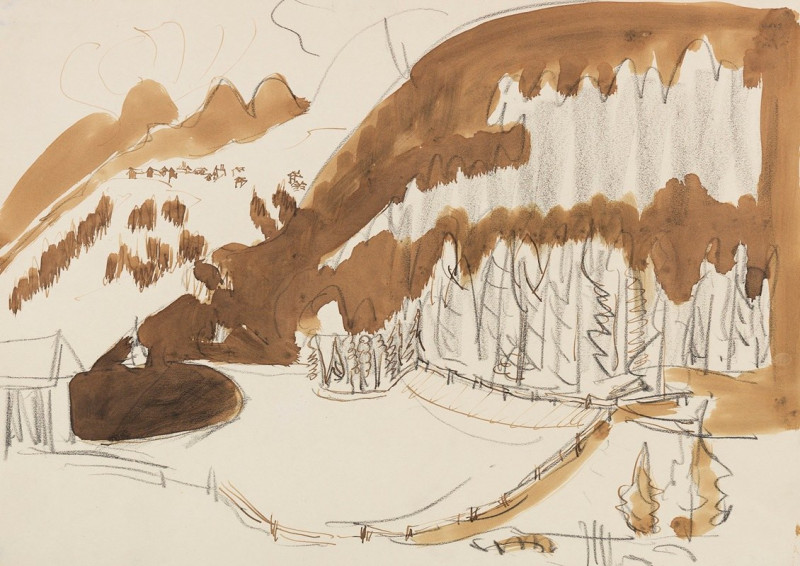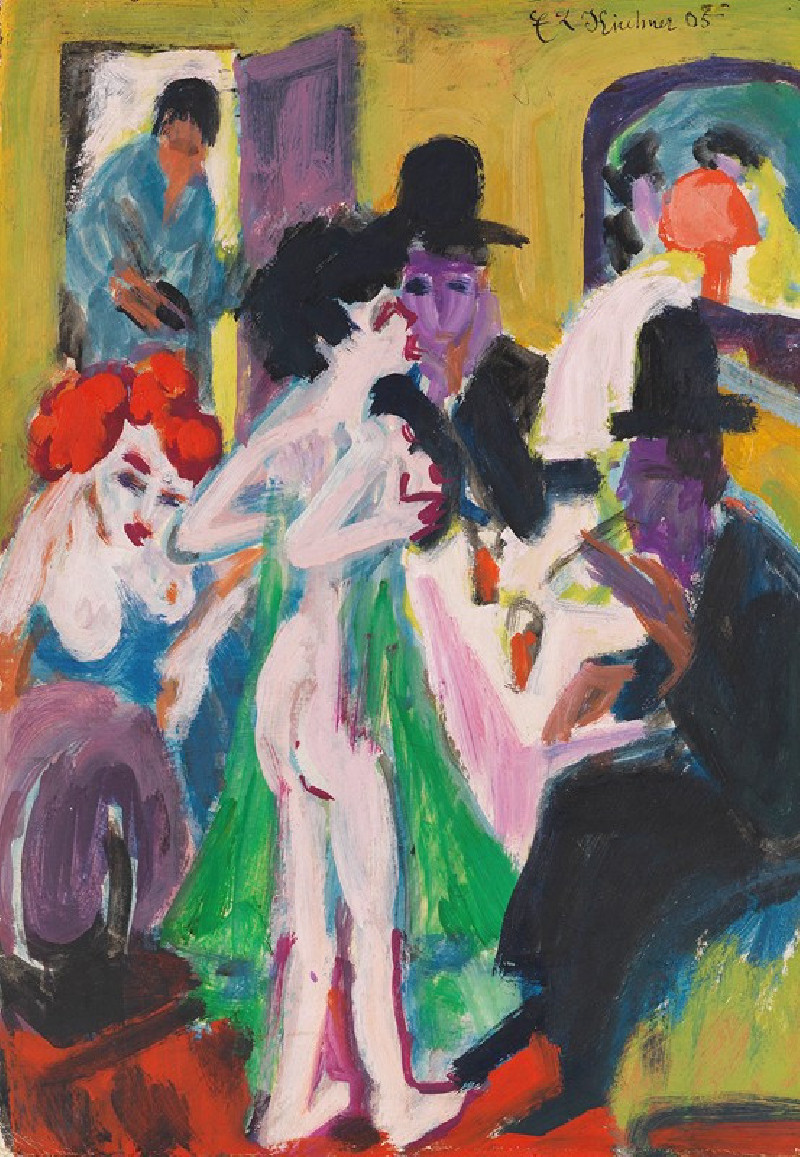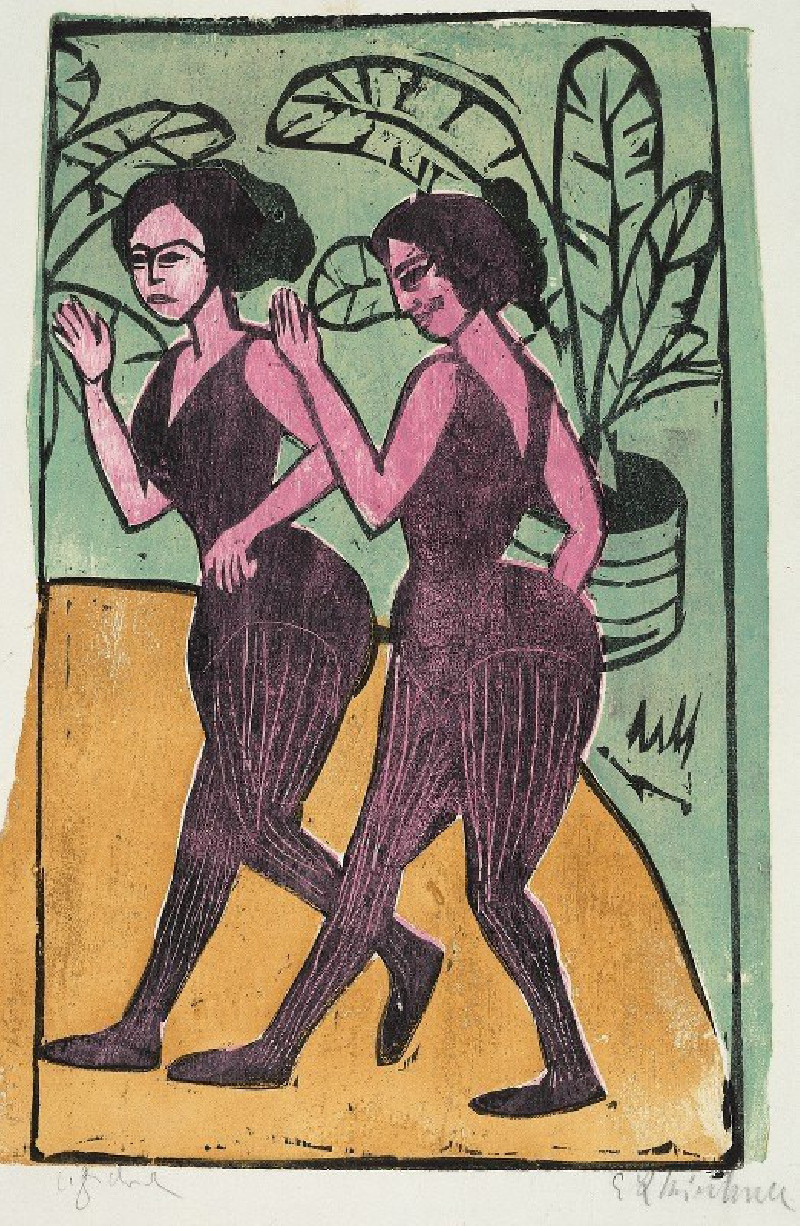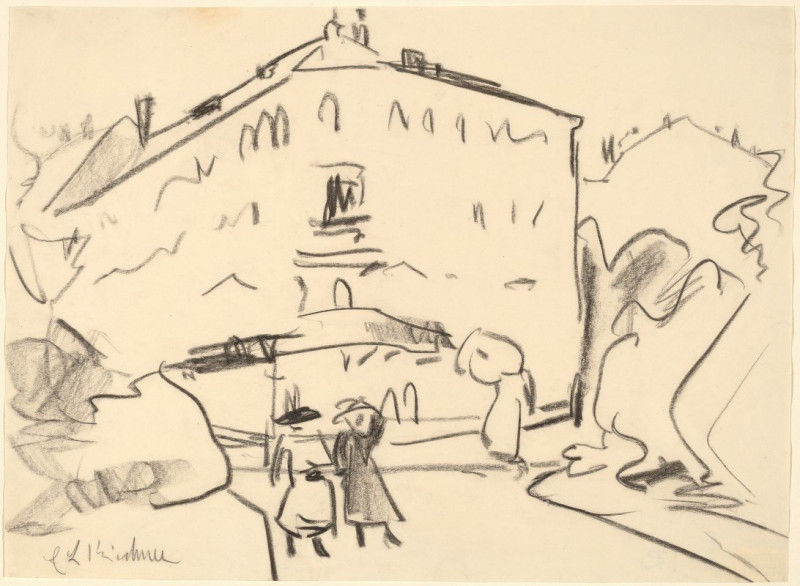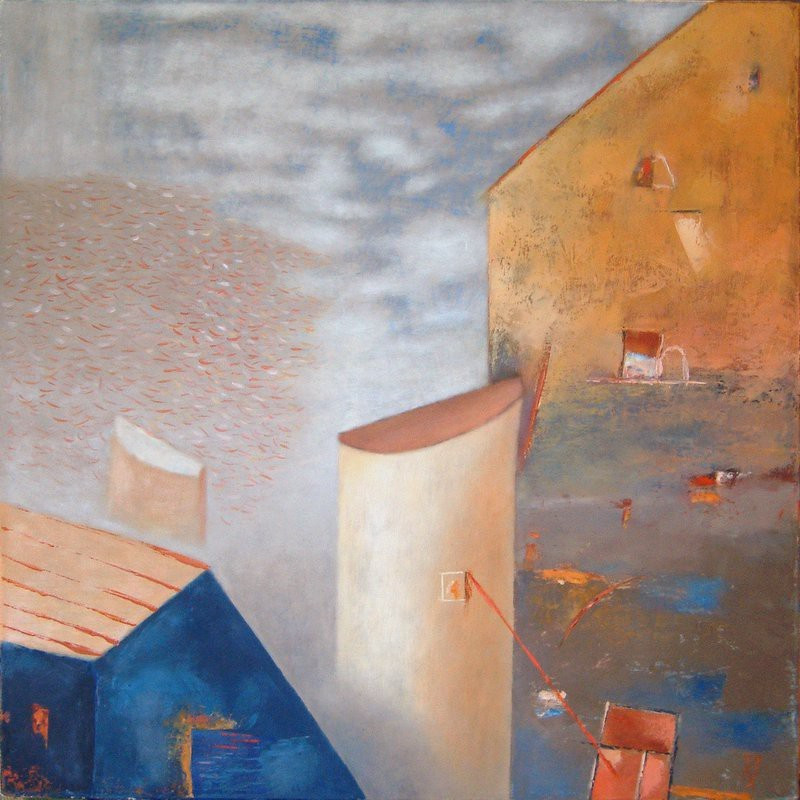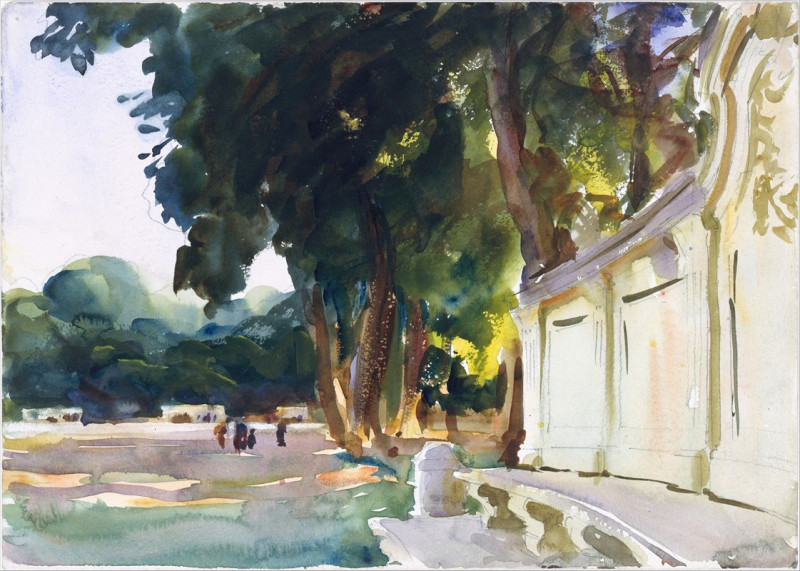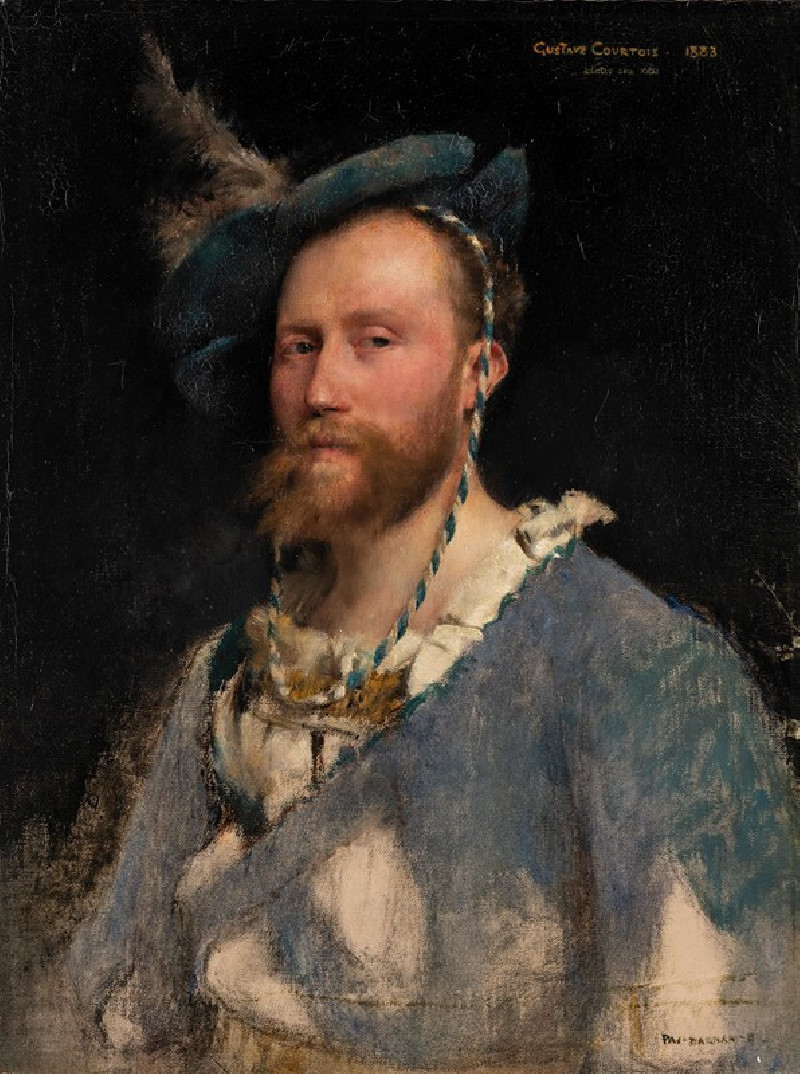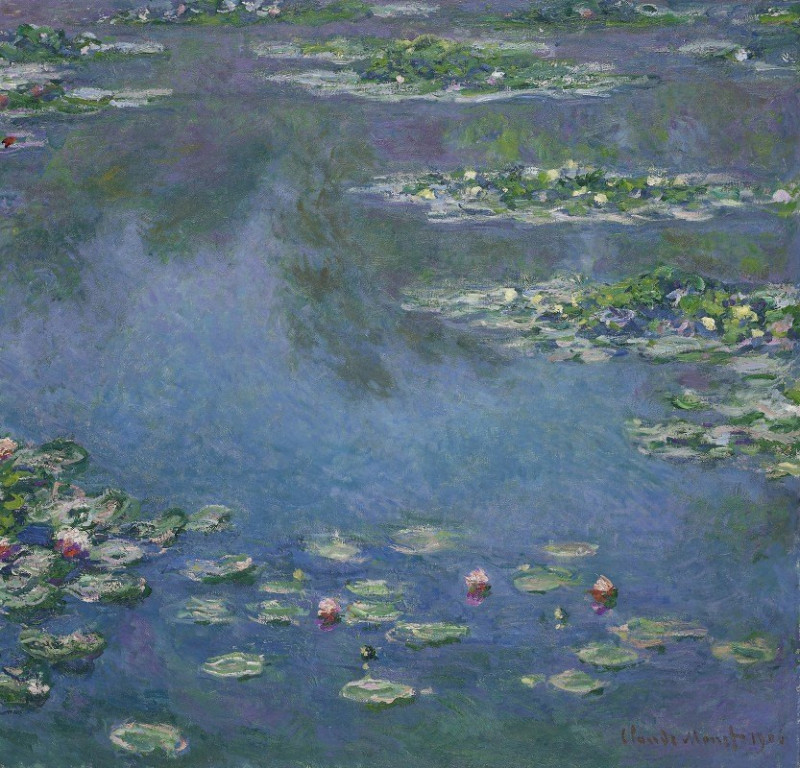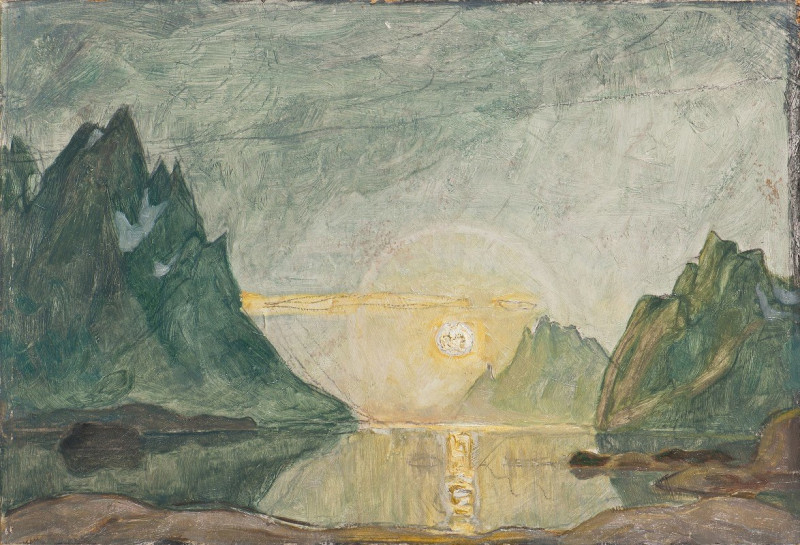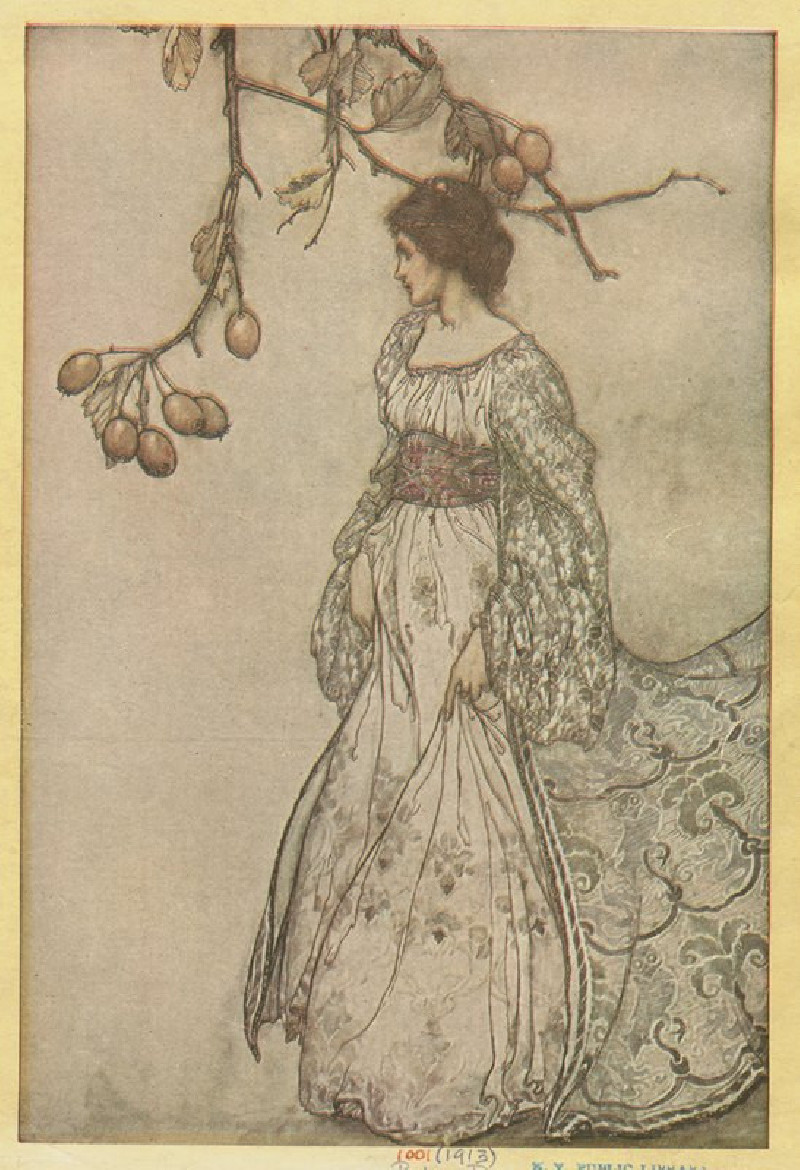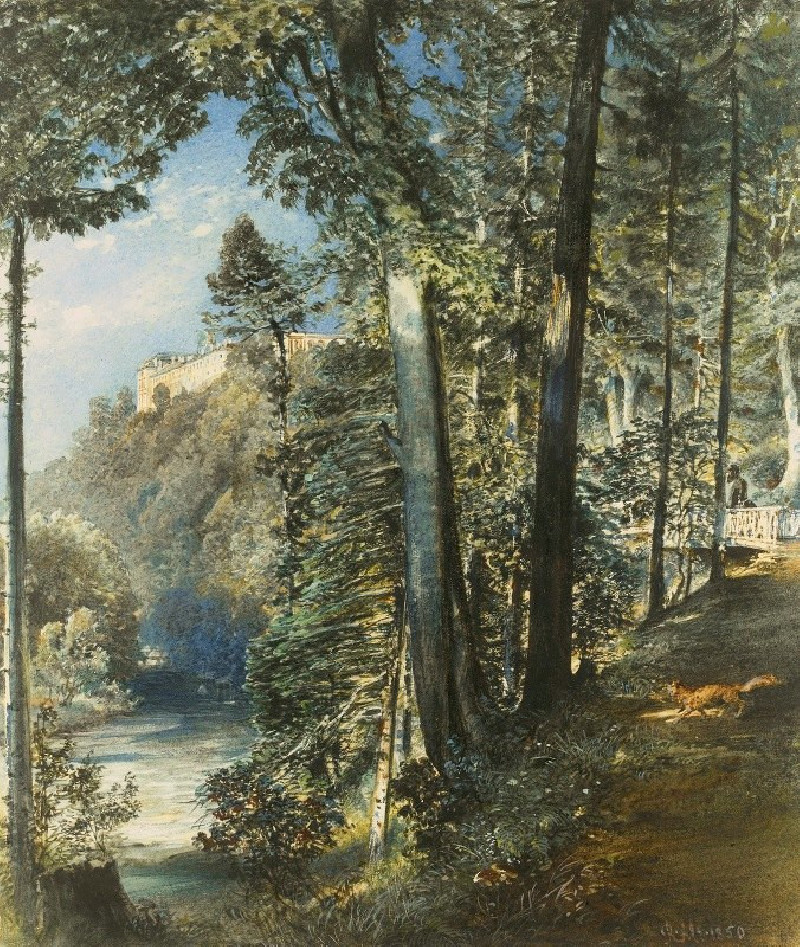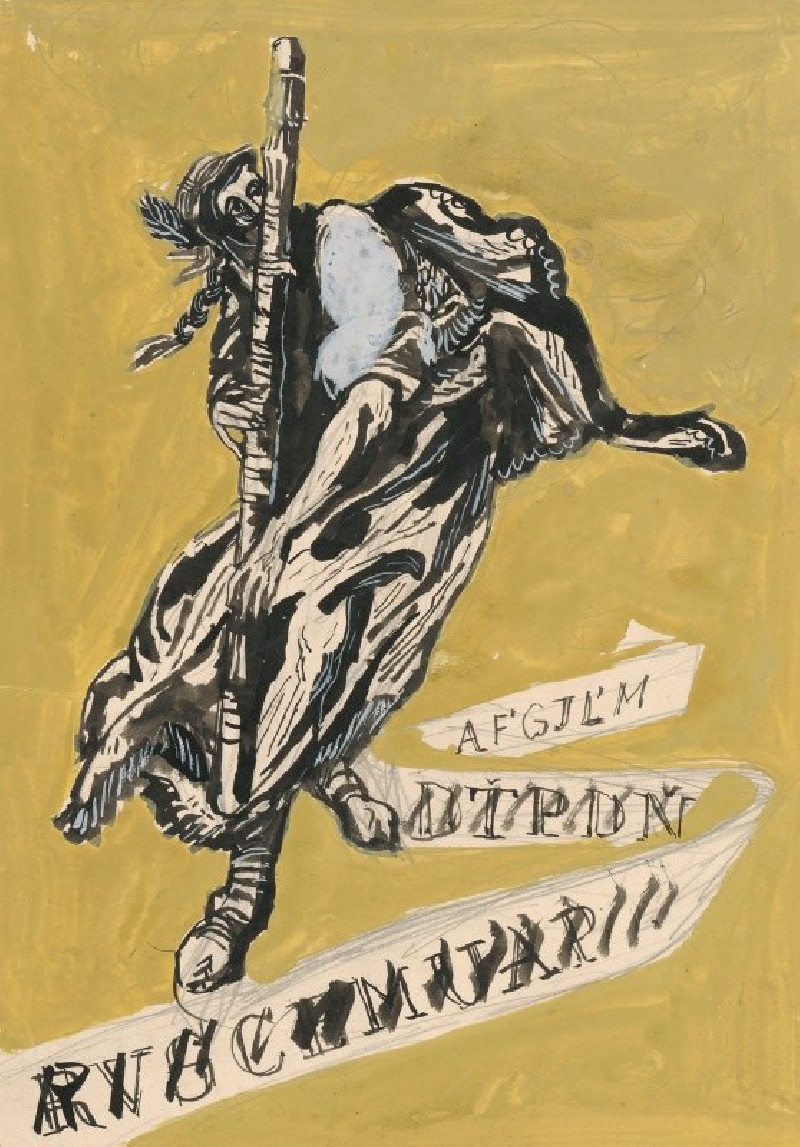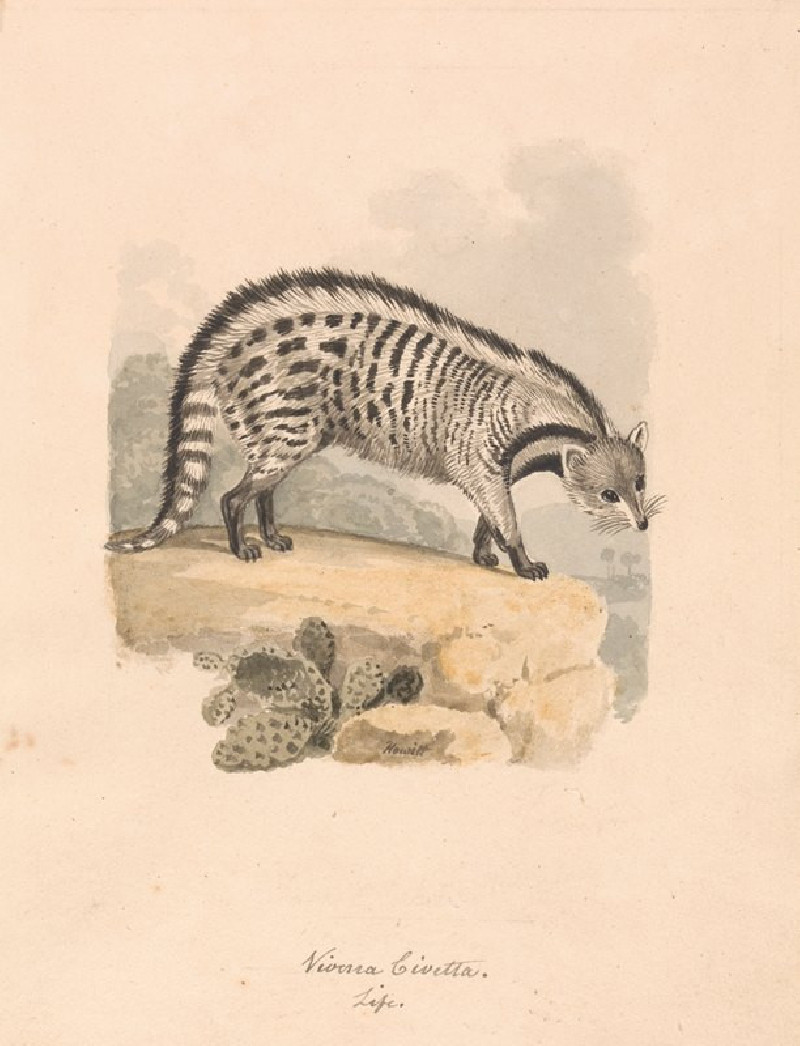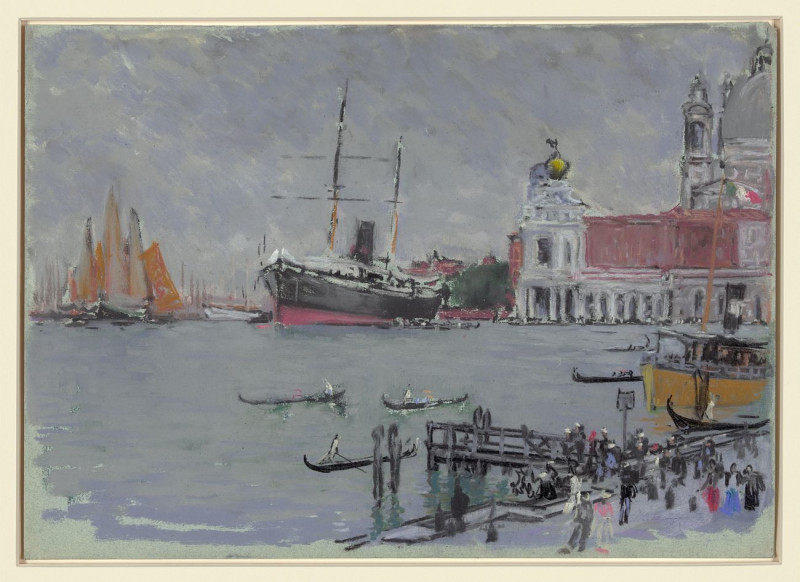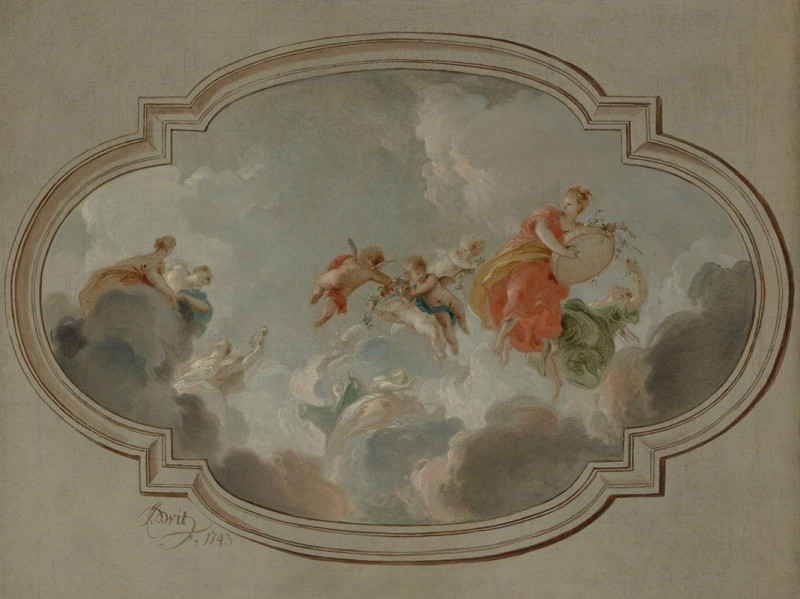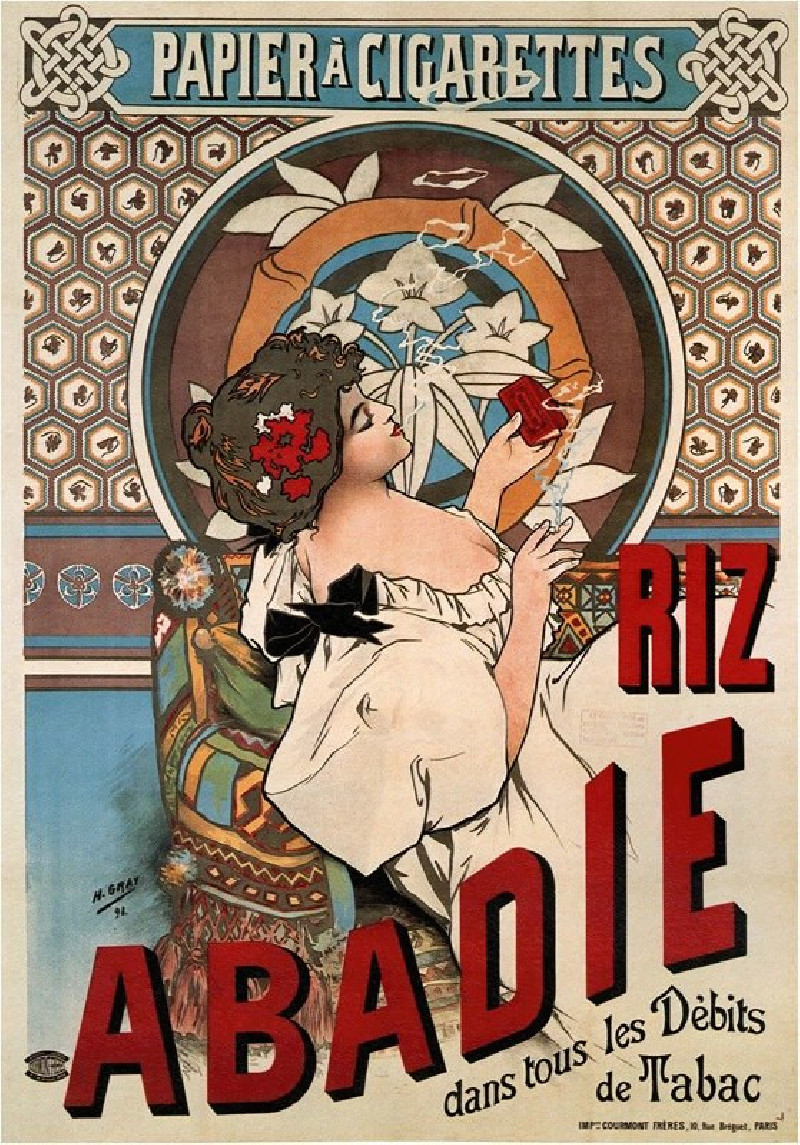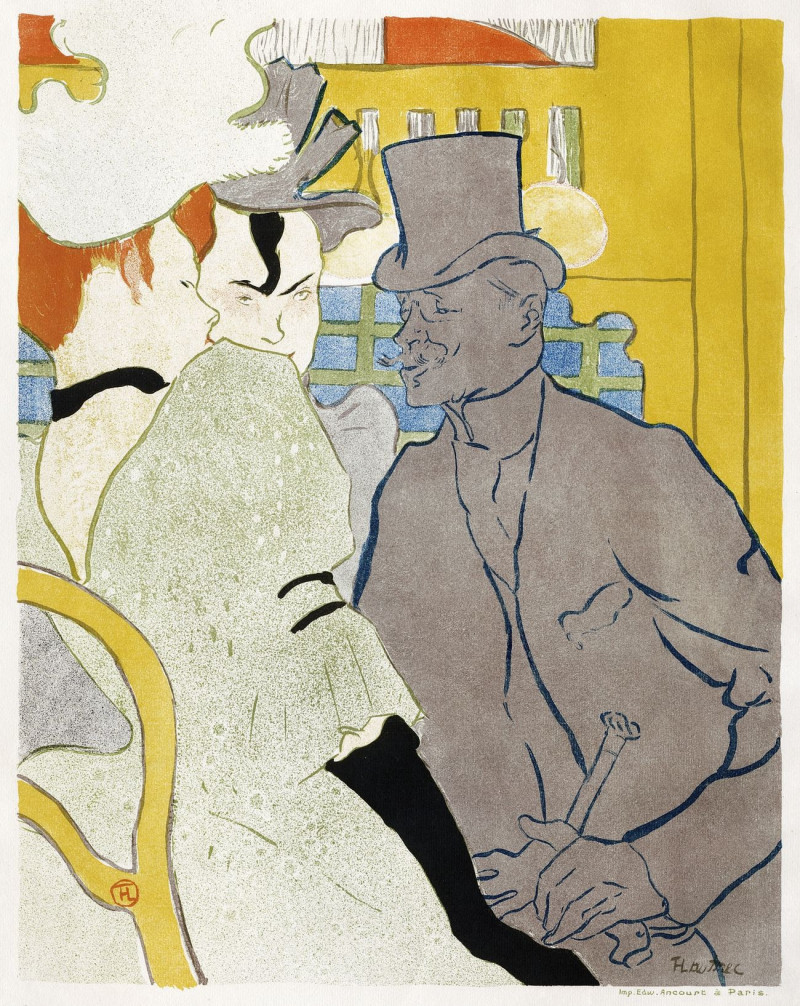A Dancer (1933)
Technique: Giclée quality print
Recommended by our customers
More about this artwork
Ernst Ludwig Kirchner's evocative piece, "A Dancer" (1933), captivates with its striking simplicity and emotive power. This minimalist ink drawing encapsulates the essence of fluid motion and expressive form within its seemingly spontaneous lines. Kirchner, a leading figure in the Expressionist movement, was adept at capturing the intensity and dynamism of human figures, often focusing on scenes of urban life and the isolation felt within it.In "A Dancer," we witness the graceful contortions of a solo performer, rendered in a series of sweeping, curvilinear strokes that suggest both movement and the ethereal nature of dance. The figure appears almost abstract, with elongated limbs and a swirl of lines that emulate a twirling motion, resonating with a sense of freedom and abandon.The dancer's head is delicately tilted backwards, a gesture that might imply ecstasy or deep immersion in the dance. There’s a suggestion of a crown or an ornate hairpiece—perhaps an indication of the dancer’s role or the cultural backdrop against which this performance occurs. Despite the absence of a detailed setting or complex color scheme, Kirchner's expert use of positive and negative space brings forth an engaging narrative that allows viewers to fill in the visual gaps with their imagination."A Dancer" is a testament to Kirchner's pioneering spirit and his endeavor to explore the expressionist potential of line and form. It stands as a poignant reminder of the transformative power of art and its ability to convey complex human emotions with simple strokes. This piece is not just a visual representation; it is an invitation to perceive and appreciate the boundless realms of expressionistic art.
Delivery
Returns
Ernst Ludwig Kirchner (1880–1938) was one of the most important German Expressionist painters. He was a co-founder of Die Brücke, a group of German expressionist artists formed in Dresden in 1905. Die Brücke and Kirchner took inspiration from Vincent Van Gogh and Edvard Munch, as well as African and Oceanic art. They used woodblock printing as a medium to showcase their signature style: flat, unrealistic images with vivid colors. The recurring themes in Kirchner's artworks included exotic cultures, faraway landscapes, self-portraits, dancers and Berlin street life. His paintings and prints effectively portrayed non-European cultures despite the fact that he never traveled outside of Europe.

